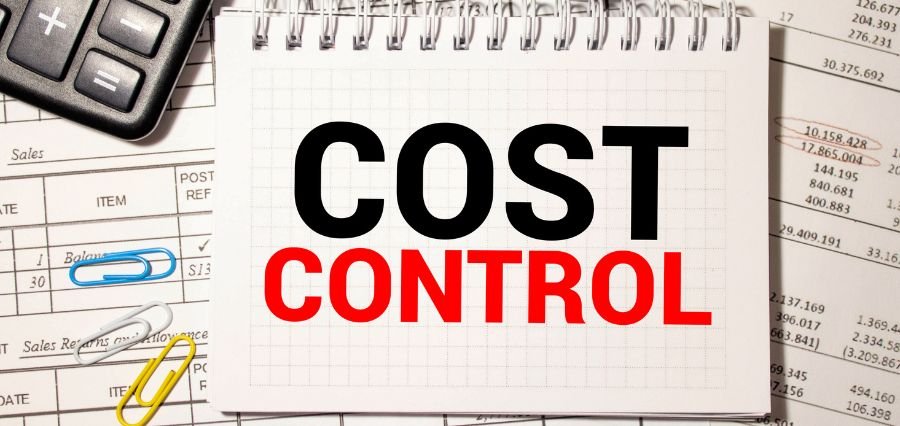Cost control techniques have evolved from being book-intelligent techniques to becoming the signature of competitive and sustainable 2025 firms. As inflation rises, technology evolves at a whirlwind speed, and unpredictability in the global climate, cost management smartly is no longer solely about reducing wasteful cost but about reducing costs. As a budding entrepreneur with a startup or an international company, becoming an expert on cost management strategically is central to survival and prosperity in today’s volatile economy.
Companies need to embrace a pro-active, data-driven, and innovative approach in the implementation of cost control techniques that affect all the functions, be it finance to operations, marketing to human resources. This blog explores the best practices of cost control that are defining the financial sustainability of businesses globally.
Constructing Cost-Aware Culture Across Teams
The initial cost control techniques is not economic but cultural. Building a culture that is cost-sensitive assists in getting the employees to agree with the financial objectives of the organization. Employees who are familiar with the cost control meaning have value-based, informed choices.
By engaging all departments in budgeting, defining clear fiscal goals, and paying for prudent innovation, leaders create a culture where fiscal conservativism comes naturally. Frequent open communication and cross-functional interaction usually eliminate hidden inefficiencies, so cultural sensitivity is perhaps the most effective approach to cost control.
Real-Time Technology for Financial Vigilance
In a time when prolonged monetary reaction can prove catastrophic, embracing technology for real-time tracking is the future. With AI-based analytics to cloud ERP systems, new-age tools today allow businesses with live dashboards which identify cost variations and forecast spending.
These technologies, beyond supporting cost analysis and control, better enable procurement, supply chain, and operations decision-making. Automated expense reporting, intelligent vendor negotiations, and trend analysis reduce redundancy and optimize spending with accuracy and velocity.
Sustainable Cost Management for Long-Term Gains
Those are the good old days when profitability and sustainability were synonyms. Green projects are now merely cost savings these days. The companies that incur costs on energy conservation initiatives, going paperless, and lean logistics not only reduce their environmental footprint but also serve their bottom line.
This is an integration of the intersection of management and cost accounting principles. Replacement of traditional methods with green options has short-term gains and long-term brand sustainability in terms of grants, tax incentives, and patronage from customers.
Strategically Outsourcing and Wise Management of Suppliers
Today’s companies know that not all work can be performed in-house. Outsourcing of non-core functions such as IT, payroll, and customer support can reduce the cost of control significantly without compromising quality.
Just as important is strategic vendor management. Periodic review of contracts, performance monitoring, and competitive benchmarking allow companies to renegotiate better terms and prevent cost leakage. Strategically designed service-level agreements (SLAs) and fact-based performance monitoring lead to value partnerships in the long term.
Effective Inventory Control to Prevent Waste
Inventory mismanagement is the largest source of hidden cost. Holding cost and wastage are incurred by overstocking, while understock translates to lost sales and suspended production. Just-In-Time (JIT) inventory controls, automated inventory reminders, and demand forecasted planning keep it at bay.
This type of optimization is a master use of cost control techniques in production and retail industry where small changes can bring enormous savings. Bulk buying of high-demand products, recycling, and policies of reuse contribute greatly towards operational efficiency.
Workforce Optimization Through Smart Skill Management
Human capital will likely be the biggest operating cost to any business. The loss of jobs is not the only way to control costs, however. Instead, the adaptive, multi-skilled, and agile workforce leads to more effective resource utilization.
Upskilling employees reduces dependence on outsourcing and internal ingenuity grows. Hiring freelancers, part-time, or seasonal staff keeps productivity up without artificially inflating payroll. That is the height of productive cost control and management accounting in HR planning.
Smarter Marketing with Sharper ROI
Marketing doesn’t need big budgets anymore—it needs big brains. Digital marketing, content marketing, email marketing, and influencer collaborations return great investment for a fraction of the cost of traditional advertising.
Data-driven processes like A/B testing, campaign segmentation, and performance analytics let businesses spend marketing budget to the fullest. Instead of “spend more to get more,” excellent companies employ spend smart to get specific, the true essence of effective cost analysis and control in action.
Disciplined Forecasting and Agile Budgeting
The most important component of effective cost control is financial vision. Budgeting must be dynamic and responsive, and not rigid. Companies that make use of real-time budgetary revisions and zero-based budgeting, where each expense is re-imagined justifying itself, are most adaptable to adjust.
The discipline allows the implementation of best cost control techniques because it maintains expense in line with actual performance and strategic priority. Organizations no longer react to change—They’re anticipating it through predictive analytics and scenario planning.
Innovation: A Cost Control Superpower
The cost control future lies in innovation. Artificial intelligence, IoT sensors, blockchain, and machine learning are pushing the boundaries of cost effectiveness,.
AI detects wasteful spending habits. IoT sensors used for manufacturing or logistics track usage and reduce downtime. Blockchain enables secure and unlimited financial transfers. Such cutting-edge technologies form the foundation of what cost control meaningtruly is in our world: intelligent, forward-looking, and structured cost control.
Conclusion: Control Costs, Empower Growth
As we drive through the dynamic world of business in 2025, cost control methods aren’t just effective tools-they’re drivers of growth. With cost control not just an assignment but also a mindset shared by everyone, business organizations build resilience, flexibility, and sustained profitability.
Organizations that embrace cultural transformation, real-time technologies, sustainable practices, and innovative strategies will not only reduce the cost of control but will also elevate their market positioning. Remember, effective cost control isn’t about doing less—it’s about doing better, smarter, and more purposefully.
By understanding the true impact of every dollar spent and aligning cost decisions with business objectives, you’re not just saving money—you’re building value that lasts.
Read Also: Understanding Corporate Structures in the Middle East







